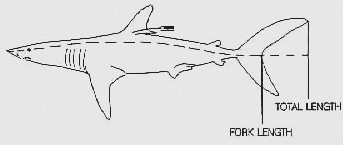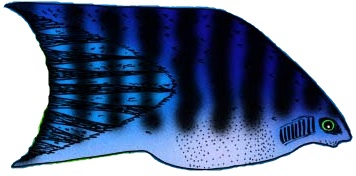|
Parapercis Ommatura
''Parapercis ommatura'' is a species of ray-finned fish in the sandperch family, Pinguipedidae. It is found from southern Japan to China. Description ''Parapercis ommatura'' can reach a standard length Fish measurement is the measuring of individual fish and various parts of fish anatomy, their anatomies, for data used in many areas of ichthyology, including Taxonomy (biology), taxonomy and fishery biology. Overall length Standard length (SL) is ... of . References *Masuda, H., K. Amaoka, C. Araga, T. Uyeno and T. Yoshino, 1984. The fishes of the Japanese Archipelago. Vol. 1. Tokai University Press, Tokyo, Japan. 437 p. ommatura Taxa named by David Starr Jordan Taxa named by John Otterbein Snyder Fish described in 1902 Fish of Japan Fish of China {{Pinguipedidae-stub ... [...More Info...] [...Related Items...] OR: [Wikipedia] [Google] [Baidu] |
David Starr Jordan
David Starr Jordan (January 19, 1851 – September 19, 1931) was the founding president of Stanford University, serving from 1891 to 1913. He was an ichthyologist during his research career. Prior to serving as president of Stanford University, he served as president of Indiana University Bloomington, Indiana University from 1885 to 1891. Jordan was also a strong supporter of eugenics, and his published views expressed a fear of "race-degeneration", asserting that cattle and human beings are "governed by the same laws of selection". He was an antimilitarist since he believed that war killed off the best members of the gene pool, and he initially opposed American involvement in World War I. Early life and education Jordan was born in Gainesville (town), New York, Gainesville, New York, and grew up on a farm in upstate New York. His parents made an unorthodox decision to educate him at a local girls' high school. His middle name, Starr, does not appear in early census records, ... [...More Info...] [...Related Items...] OR: [Wikipedia] [Google] [Baidu] |
John Otterbein Snyder
John Otterbein Snyder (August 14, 1867 – August 19, 1943) was an American ichthyologist and professor of zoology at Stanford University. History As a student he met David Starr Jordan who inspired him to enter zoology. He eventually became a zoology instructor at Stanford University and served there from 1899 until 1943. He went on several major collecting expeditions aboard the in the early 1900s and organized the U.S. National Museum's fish collection in 1925. The same year he also declined the directorship there so he could return to Stanford. He was a long-term member of the California Academy of Sciences and worked for the California Bureau of Fisheries. He wrote many articles and papers as well as describing several new species of sharks. San Francisco Bay In 1905, Snyder, then assistant professor of zoology at Stanford, published ''Notes on the fishes of the streams flowing into San Francisco Bay'' in ''Report of the Commissioner of Fisheries to the Secretary of Commerc ... [...More Info...] [...Related Items...] OR: [Wikipedia] [Google] [Baidu] |
Ray-finned Fish
Actinopterygii (; ), members of which are known as ray-finned fish or actinopterygians, is a class of bony fish that comprise over 50% of living vertebrate species. They are so called because of their lightly built fins made of webbings of skin supported by radially extended thin bony spines called '' lepidotrichia'', as opposed to the bulkier, fleshy lobed fins of the sister clade Sarcopterygii (lobe-finned fish). Resembling folding fans, the actinopterygian fins can easily change shape and wetted area, providing superior thrust-to-weight ratios per movement compared to sarcopterygian and chondrichthyian fins. The fin rays attach directly to the proximal or basal skeletal elements, the radials, which represent the articulation between these fins and the internal skeleton (e.g., pelvic and pectoral girdles). The vast majority of actinopterygians are teleosts. By species count, they dominate the subphylum Vertebrata, and constitute nearly 99% of the over 30,000 extant ... [...More Info...] [...Related Items...] OR: [Wikipedia] [Google] [Baidu] |
Sandperch
The sandperches are a family, Pinguipedidae, of ray-finned fishes in the percomorph order Labriformes. Sandperches are benthic fish which normally occur over sand or rubble substrates in shallow seas. They are found off the coasts of South America, South Africa and in the Indo-Pacific as far east as Japan. The family contains a few species which are used by humans for food. Characteristics Some sandperches resemble wrasse in that they possess long dorsal and anal fins which may have a few spines and enlarged lips that appear to curl back with big canine teeth in the front of the jaws. They have elongated bodies which are flattened posteriorly and cylindrical towards the head. The body usually patterned with spots and bands, The eyes are positioned near top of head. They are relatively small in size, normally in length. These fish tend to sit on the sea bed, their bodies propped up by the widely separated pelvic fins. Some of the members of the speciose genus ''Parapercis'', m ... [...More Info...] [...Related Items...] OR: [Wikipedia] [Google] [Baidu] |
Standard Length
Fish measurement is the measuring of individual fish and various parts of fish anatomy, their anatomies, for data used in many areas of ichthyology, including Taxonomy (biology), taxonomy and fishery biology. Overall length Standard length (SL) is the length of a fish measured from the tip of the snout to the posterior end of the last vertebra or to the posterior end of the midlateral portion of the Glossary of ichthyology#H, hypural plate. This measurement excludes the length of the caudal fin, caudal (tail) fin. Total length (TL) is the length of a fish measured from the tip of the snout to the tip of the longer lobe of the caudal fin, usually measured with the lobes compressed along the midline. It is a straight-line measure, not measured over the curve of the body. Standard length measurements are used with Teleostei (most Actinopterygii, bony fish), while total length measurements are used with Myxini (hagfish), Petromyzontiformes (lampreys) and usually Elasmobranchii (shark ... [...More Info...] [...Related Items...] OR: [Wikipedia] [Google] [Baidu] |
Parapercis
''Parapercis'' is a genus of sandperches belonging to the family Pinguipedidae The sandperches are a family, Pinguipedidae, of ray-finned fishes in the Percomorpha, percomorph Order (biology), order Labriformes. Sandperches are benthic fish which normally occur over sand or rubble Substrate (biology), substrates in shallow .... Species There are currently 79 recognized species in this genus: * '' Parapercis albipinna'' J. E. Randall, 2008 * '' Parapercis albiventer'' H.-C. Ho, Heemstra & Imamura, 2014 (Whitebelly sandperch) * '' Parapercis alboguttata'' ( Günther, 1872) (Whitespot sandsmelt) * '' Parapercis allporti'' Günther, 1876 (Barred grubfish) * '' Parapercis atlantica'' ( Vaillant, 1887) * '' Parapercis aurantiaca'' Döderlein ( de), 1884 * '' Parapercis australis'' J. E. Randall, 2003 * '' Parapercis banoni'' J. E. Randall & Yamakawa, 2006 * '' Parapercis basimaculata'' J. E. Randall, Senou & Yoshino, 2008 * '' Parapercis bicoloripes'' Prokofi ... [...More Info...] [...Related Items...] OR: [Wikipedia] [Google] [Baidu] |
Taxa Named By David Starr Jordan
In biology, a taxon (back-formation from ''taxonomy''; : taxa) is a group of one or more populations of an organism or organisms seen by taxonomists to form a unit. Although neither is required, a taxon is usually known by a particular name and given a particular ranking, especially if and when it is accepted or becomes established. It is very common, however, for taxonomists to remain at odds over what belongs to a taxon and the criteria used for inclusion, especially in the context of rank-based (" Linnaean") nomenclature (much less so under phylogenetic nomenclature). If a taxon is given a formal scientific name, its use is then governed by one of the nomenclature codes specifying which scientific name is correct for a particular grouping. Initial attempts at classifying and ordering organisms (plants and animals) were presumably set forth in prehistoric times by hunter-gatherers, as suggested by the fairly sophisticated folk taxonomies. Much later, Aristotle, and later still ... [...More Info...] [...Related Items...] OR: [Wikipedia] [Google] [Baidu] |
Fish Described In 1902
A fish (: fish or fishes) is an aquatic, anamniotic, gill-bearing vertebrate animal with swimming fins and a hard skull, but lacking limbs with digits. Fish can be grouped into the more basal jawless fish and the more common jawed fish, the latter including all living cartilaginous and bony fish, as well as the extinct placoderms and acanthodians. In a break to the long tradition of grouping all fish into a single class (Pisces), modern phylogenetics views fish as a paraphyletic group. Most fish are cold-blooded, their body temperature varying with the surrounding water, though some large active swimmers like white shark and tuna can hold a higher core temperature. Many fish can communicate acoustically with each other, such as during courtship displays. The study of fish is known as ichthyology. The earliest fish appeared during the Cambrian as small filter feeders; they continued to evolve through the Paleozoic, diversifying into many forms. The earliest fish wi ... [...More Info...] [...Related Items...] OR: [Wikipedia] [Google] [Baidu] |
Fish Of Japan
A fish (: fish or fishes) is an aquatic, anamniotic, gill-bearing vertebrate animal with swimming fins and a hard skull, but lacking limbs with digits. Fish can be grouped into the more basal jawless fish and the more common jawed fish, the latter including all living cartilaginous and bony fish, as well as the extinct placoderms and acanthodians. In a break to the long tradition of grouping all fish into a single class (Pisces), modern phylogenetics views fish as a paraphyletic group. Most fish are cold-blooded, their body temperature varying with the surrounding water, though some large active swimmers like white shark and tuna can hold a higher core temperature. Many fish can communicate acoustically with each other, such as during courtship displays. The study of fish is known as ichthyology. The earliest fish appeared during the Cambrian as small filter feeders; they continued to evolve through the Paleozoic, diversifying into many forms. The earliest fish w ... [...More Info...] [...Related Items...] OR: [Wikipedia] [Google] [Baidu] |






